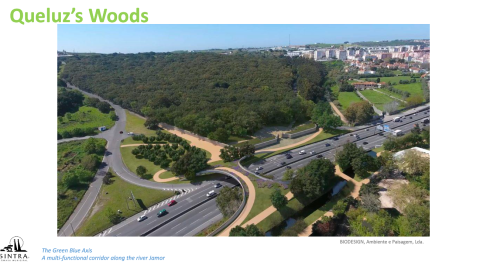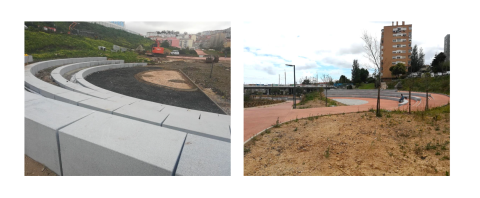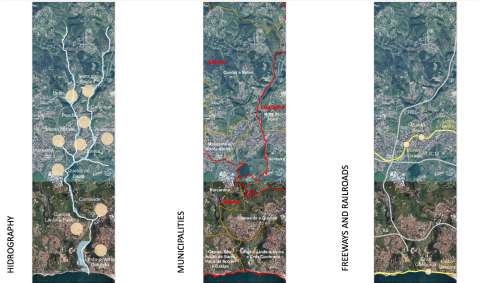
EVA: Eixo Verde Azul/Green Blue Axis

About this good practice
The Green and Blue Axis is a joint project involving the municipalities of Sintra, Oeiras, Amadora and Parques de Sintra Monte da Lua. The goal was to create an ecological and soft mobility corridor along the River Jamor stretching for more than 16 km, from the river’s source in the Serra da Carregueira to its estuary in Caxias. The Green and Blue Axis reflects a vision of the territory supported by multifunctional corridors. Corridors for the circulation of water, nature and people, in everyday life and leisure. This route intersects major transport links: the Sintra and Cascais lines, the IC-19 and the A-5. Access to railway lines reinforces sustainable mobility by connecting people to a high-value architectural and scenic heritage. Via a gentle path, almost always next to the water and in the midst of nature, this great axis ensures continuity, promotes experience of spaces and suggests inducements to points of interest along the way. Natural engineering techniques were applied, placing value on nature and ecosystems. All pedestrian and cycling pavements are accessible and guarantee permeability. The stakeholders involved were mainly the public authorities and citizens as main beneficiaries.
Expert opinion
Resources needed
Investment for the project was €1 739 628, with the EU’s European Regional Development Fund contributing € 869 814 through the “Programa Operacional Regional de Lisboa e Vale do Tejo” Operational Programme for the 2014-2020 programming period- “Sustainable urban development”.
Evidence of success
The project promoted both cultural and natural heritage by enhancing disused spaces and providing better infrastructure for cultural activities and sports events. This significantly improved quality of life, and tourists’ access to the area. 86% increase in green area equipped and formally open to the public, surrounding the Queluz Nacional Palace;14.800 m of new routes; 14.100 m of treated water lines.
Potential for learning or transfer
The learning or transfer associated with this project is mostly related to the approach/methodology applied to assess where to best intervene and also the partnership established with several entities. The transferable activities and features are related to the revitalization of the space for the enjoyment of local residents and providing new approaches to challenges on natural ecosystems and mobility. In order to be adopted in other contexts, similar challenges had to be identified in order to best use the results of the practice.
Another transferability potential feature is the regeneration of underutilised urban areas with the intervention on green areas. These areas are better connected with an historical Palace promoting less traffic and better rail connections, enhancement of the area’s recreational value also benefitting tourism. The interventions towards improved water quality and biodiversity in the river are also key transferable features.



